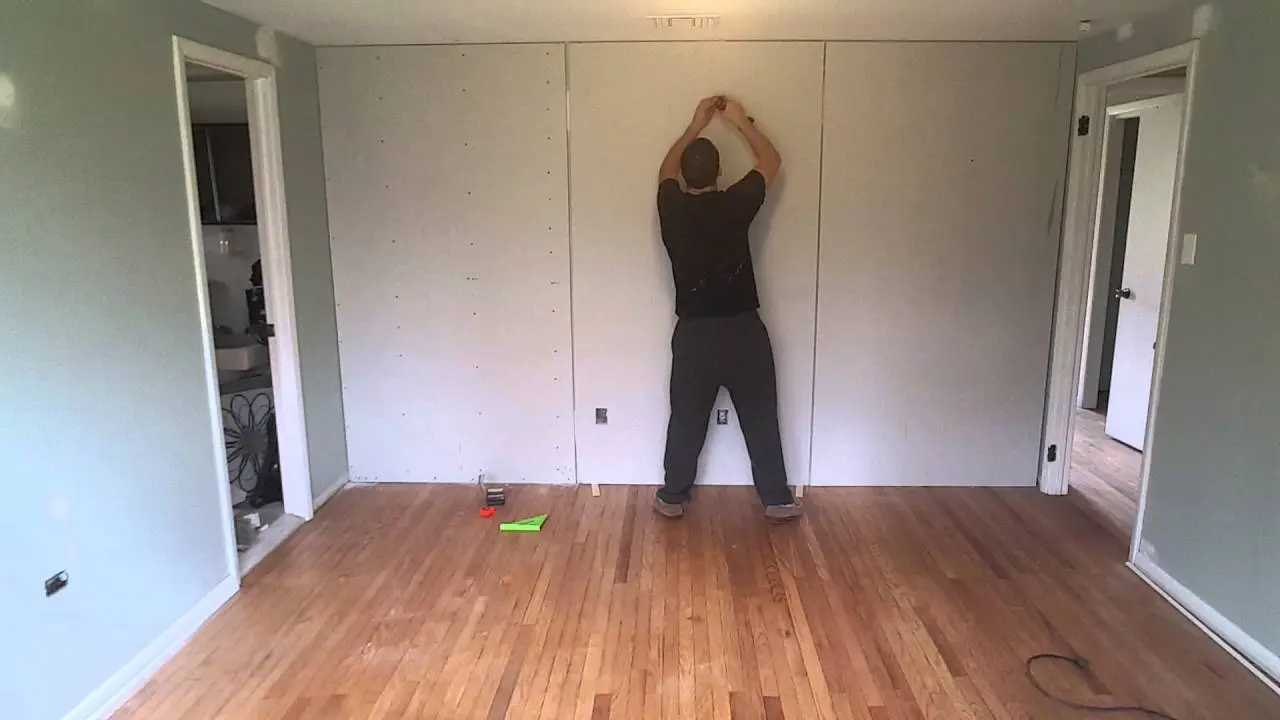Many apartments and homes interior walls are built with drywall. These drywalls are used in place of plaster my builders to save money. In this attempt to lower cost, these drywalls are not soundproof enough to block unwanted sounds leaking between these walls.
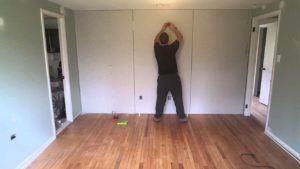
Since you might not be able to remove the existing wall in your home or you just don’t want to remove it, in this article we will look at soundproofing interior walls without removing drywall that exists already.
Luckily, there are many ways to soundproof existing walls without bringing the old drywall down.
Some soundproofing techniques you can use n soundproof walls without removing existing drywall include:
- Using Mass Loaded Vinyl Mat
- Hang Soundproof Acoustic Foam
- Hang Sound deadening blanket
- Install 3D Soundproof Wallpaper
- Use Soundproof Curtains
- Paint Wall with Soundproof
- Use Soundproof Green Glue
- Add Extra Drywall
- Create a New wall Decoupled from the Existing Wall
- Place Household Items are Vantage Points
Soundproofing interior walls are the best way to take care of noise leakage into other rooms. The wall come be subjected to a lot of unwanted sounds.
Noise such as television in the other room making noise, people having conversations, washing machine or dishwasher vibrations coming through the walls, children in the other room playing and many other unwanted sounds that can disturb your peace of mind.
The only way to have control over these noises is to soundproof the walls in the room. Some of these soundproofing techniques are more effective than others.
As such, you can need to combine two or more techniques to have better noise reduction. The amount of mass a wall has is proportional to the level of soundproofing. That is why brick and mortar walls better soundproofed than these drywalls.
Therefore, adding extra mass that has sound deadening or reflecting abilities, will make the room walls soundproof better.
How to Soundproof Interior Walls Without Removing Existing Drywall
Interior walls that are made of drywalls are vulnerable to noise leakage and as such need to be soundproof.
Instead of removing the existing drywall and building a new plaster wall, one of the best ways to make them drywall soundproof is to consider these techniques I will talk about below.
1. Use Mass Loaded Vinyl Mat
Mass loaded vinyl mat is one of the best effective soundproofing materials around. It is versatile in use. You can use it for almost any part of the room such as the walls, ceiling, doors, windows and the floor under the subfloor or under the carpet.
It can equally be used to quiet appliances and gadgets. That shows how robust it is in usage.
You can install it on the wall by gluing, stapling, nailing. Mass Loaded Vinyl mat is very effective at both impact and airborne noise.
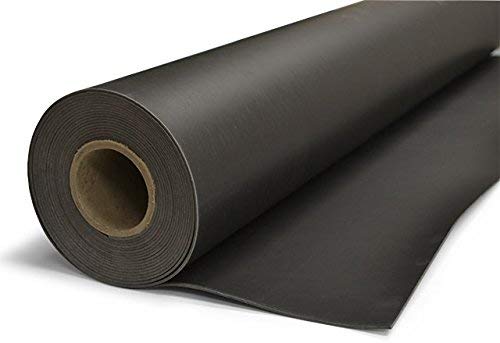
It works by blocking the sound from entering the room through the walls by reducing the impact the noise will make in the from.
To hang the vinyl mat on the wall, you will need at least one person to help you hold it against the wall for you to either glue it, staple or nail it.
It is relatively heavy to handle by just one person if unless the piece is very small. You can start from the bottom working your way up the wall with it.
If you plan on adding an additional layer of drywall, you can use the mass loaded vinyl mat in between the drywalls with Green Glue dampening compound to hold them together and act as additional soundproofing material that will increase the noise reduction rating.
2. Install Acoustic Foam Panels or Wedges
These acoustic foam panels or wedges are often found in recording studios to control the noise leakage.
These acoustic foam panels come in different shapes, forms, colors, and sizes. You can easily get some to match your taste of colors in the room.
You can also use them for different parts of the room including the ceiling, walls, doors, windows and other appliances and gadgets you wish to soundproof around you just like the viny mat.
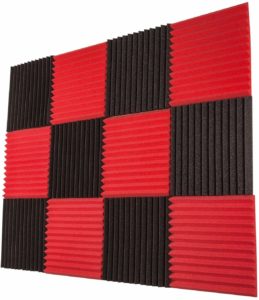
Acoustic panels are more effective at absorbing high frequency noise, like loud music, talking and singing but not very effective at impact noise. Using them to control loud airborne noise from other rooms will work.
If you want them to be more effective, you need to cover a large area with them to achieve very good results. This will be depending on your budget. They are sold in pieces.
To choose the soundproofing foam, you need to choose the determine the frequency type you are trying to block and choose the foam panels accordingly.
You then determine how much space you need to cover up with the acoustic foam panels or wedges.
Some foam panels come with self-adhesive which will help you to just peel and stick to the wall. However, some soundproof foam panels do not come with adhesive, this will require you to purchase the adhesive separately.
You can use glue adhesive or use the double-sided foam that allows you to stick the foam to the wall.
3. Hang 3D Soundproof Wallpaper
3D soundproof wallpaper is another great and non-invasive way to soundproof an existing wall. These 3D wallpapers come in different colors and designs.
Some look like brick walls, others like wall tiles, etc. You will choose the kind of design you want for your room walls. They are visually appealing and help you recreate a brick wall inside your room without building one.
These soundproof wallpapers are mostly peel and stick in nature and all you have to do is just peel and stick it to the wall and that is it. When you don’t want it again, you simply unpeel it and take it with you.
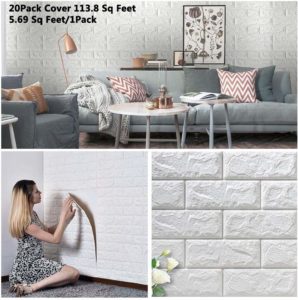
They are great for rents and homeowners who do not want to alter the wall in any way. They can be used for Featured walls, Dirty walls, TV walls, sofa background, living room walls, bedroom walls, kitchen, kids room, stairs and on glass, painted surfaces, wood board, wallpaper, etc.
4. Install Sound Deadening Blankets
Soundproof blankets are a form of sound absorbing material that is able to absorb the sounds and reduce their impact on the room.
They are usually thick in nature and have sound absorbing abilities.
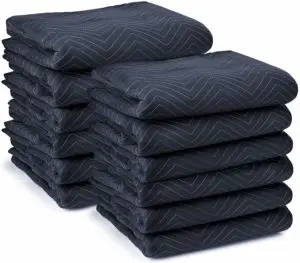
You can install them on the wall by hanging them like curtains or use glue to stick them to the wall.
These blankets can be used for different parts of the room such as the existing wall, doors, windows, ceiling or even the floor. They can easily gather dust just like any material. You will need to take them down and clean once in a while.
The good thing with these blankets, however, is that they are movable, so you can take them down and wash it anytime you need to. Same stands for the cases that you do not need them anymore.
5. Use Soundproof Curtains
Soundproof curtains are more esthetically appealing than soundproof blankets. They also come in different sizes, colors, and designs for you to choose the one that complements your room decor.
They are cost-effective and very easy to hang for any homeowner. They also come in many beautiful color options to match your current decor.
You can hang them just like any ordinary curtain on a rod and the great thing is that you can add many layers as you like to improve their soundproofing abilities.
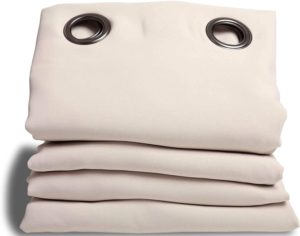
These curtains work best if you get long ones that can cover from the top of the wall to the bottom. If possible, make it touch the floor.
Sound deadening curtains are also versatile. You can use them for the door and windows as well.
6. Paint the Wall with Soundproof Paint
Painting a wall is obvious to anyone. put in this regards, you use soundproof paint to deliberately paint a couple of layers on the wall.
This soundproof paint has sound absorbing capabilities. You can choose to use the paint on the existing drywall, after installing the mass loaded vinyl mat and stuff.
It is worth mentioning that soundproof paint on its own, will only work for certain levels of noise like mild noise and not for loud noise. You can, however, use it in conjunction with some of these soundproofing methods I have outlined here to make your soundproofing efforts more effective.
Soundproof paint is thicker and has more texture than regular paint. It is usually made with latex and ceramic microspheres to help with soundproofing. It’s also rubbery in texture.
What’s nice about using soundproof paint is that it’s available in different shades, so you could easily match it with your interiors.
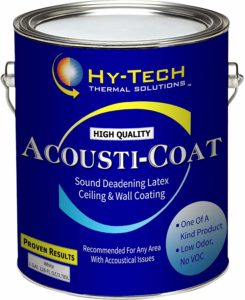
You may also use soundproof paint on your ceiling as it’s versatile. It could work on plastic, wood, and metal.
Using this soundproof paint is pretty much like any other paint. You will need to prime the wall and apply a base coat and then apply the soundproof paint as many layers as you wish but at least 2 layers.
Remember the more layers you apply, the thicker the wall will be and the better the noise blocking.
7. Install Another Layer of Drywall with Green Glue
Increasing the mass of the drywall by adding another layer of drywall. Mass is another principle of soundproofing that can not be overlooked. By adding another drywall layer, you will be increasing the mass of the existing drywall.
Similar Reads:
Cheap Ways to soundproof a room
Soundproofing room from outside noise
Remember, the thicker the additional drywall you are adding the better. So you can choose to go for the thickest if you can afford to possibly, a thickness of ⅝”.
So, you can choose to screw it into the existing wall or use a soundproofing compound like Green Glue as an adhesive to glue it to the wall.
Green Glue Compound is a sound dampening compound that converts sound energy into heat energy. It is well known if its effectiveness in soundproofing interior walls. It can easily be applied using a caulking gun because they are mostly in tubes or you can use the bucket option.
To achieve this additionally soundproofing, the green glue is applied in between the layers of drywall.
If you want to kill vibrations, Green Glue creates a dampening layer between your drywall that absorbs and dissipates vibrations, effectively stopping incoming noise.
Make sure to finish by caulking all of the edges of your wall with acoustical caulk to give the wall a good soundproofing finish. Seal all the gaps around the switches and any gap that might exist. The green glue can be used to seal them.
The other way, you increase the mass, is adding the mass loaded vinyl layer in between the drywall, you can choose to staple it, nail it or use the sound dampening compound Green Glue to sandwich it between the layers. This will add additional mass to the wall and improve its sound absorbing ability.
8. Add Extra Layer of Drywall with Resilient Channels and Clips
As we already established, most walls in the homes are constructed using drywall that is attached to both sides of a wood or metal stud frame.
Therefore, when sound waves hit one side of the wall, it caused the drywall on the other side to vibrate. This happens when there is not soundproofing structure in place to block the sound waves.
Anything that happens in the other room will automatically travel through the stud wood to the next room that the other drywall is separating. This is what usually causes the noise in the other rooms that share a wall with the noise source.
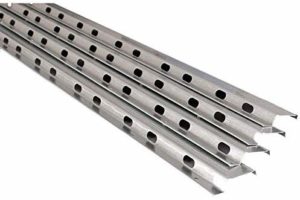
To block these vibrations from traveling via the walls, you need to insert a resilient channel between the drywall and stud work to block the unwanted sound through the wall.
Resilient channel is a thin metal channel that is intelligently designed to substantially improve the sound insulation of drywall, sheetrock, plasterboard walls, and ceilings.
The way it works is that the channel effectively isolates drywall from the framing stud work, which results in the weakening of sound waves substantially.
The resilient channel can be used to improve the acoustics of the wall by adding an extra layer of drywall to the other side of the channel, you can use the resilient channel with a mass loaded vinyl mat to add additional soundproofing to the wall.
The resilient channel is a shock absorber which can add about 3 to 5 sound transmission class to the existing wall.
Make sure that you install the resilient channel as recommended by the manufacturer to gain maximum results.
By decoupling your new drywall layer from the original wall using resilient clips and channels, we can eliminate most impact noises, and even seriously reduce many of the airborne sounds as well.
The resilient clips feature rubber backs that will help decouple them from the wall they’re attached to. You will mount the clips to your existing wall by drilling screws through your existing drywall and into the studs behind.
The resilient channels will be mounted horizontally and fastened to the clips. Your second layer of drywall will then screw directly into the channels.
Resilient channels are more effective when they are installed at the time of the wall construction, they somehow lose their effectiveness when installed on existing drywall.
9. Build a New Wall Infront of Existing Wall
Building a new wall in front of the existing wall is the most effective way to soundproof any wall. You can explore this option if you have space and the ability to do so. This is called decoupling the old wall from the new wall.
Since both walls are not attached to each other, the sound will not easily transfer from the original wall to the new wall. The new wall will only be sharing the ceiling and floor with the old wall.
in your new wall, it will be better if you choose soundproofing materials to build it out to ensure it will block the noise effectively.
You can achieve this by using new thick and high STC rating drywalls, mass loaded vinyl mat, sound dampening compound and resilient channels and clicks to make it soundproof wall.
You can then finish the new wall by painting it soundproof paint to give it a more esthetic appeal.
10. Use Household Items and Fill the Room Up
Using household items such as bookshelf, cupboards and stuff help in also can help reduce the noise. If you have a bookshelf, you can place it just a few inches away from the wall. This is a form of decoupling.
Fill the shelf with your books from your study and place it against the wall bringing in the most noise.
As you may already know, empty room makes the most noise. It gives the sound waves plenty of room to bounce around. and echo louder.
if you have items place them at vantage points in the room. Get a room carpet or floor rug and place it on the floor.
Once you’ve got the hard and heavy furniture placed around the room, it’s time to use the softer furniture to absorb the loose waves that make it through our initial barrier.
Final Words on Soundproofing Existing Drywall
As you can see above, there are many ways of soundproofing walls without removing existing drywall, You can choose two or more of these soundproofing methods above to reduce the noise that is deturbing your peace.
Many of these techniques are non-invasive and can be used by even those who are renting and are not allowed to make changes to the existing walls without permission.
I found these methods to work best when you combine two or more together in one wall.
- How to Chew Quietly While Eating-Effective Tips - April 14, 2023
- Why is My Clutch Pedal Squeaking – Causes & Fixes - April 14, 2023
- Propane Tank Making Hissing Noise (Solved) - February 25, 2023

